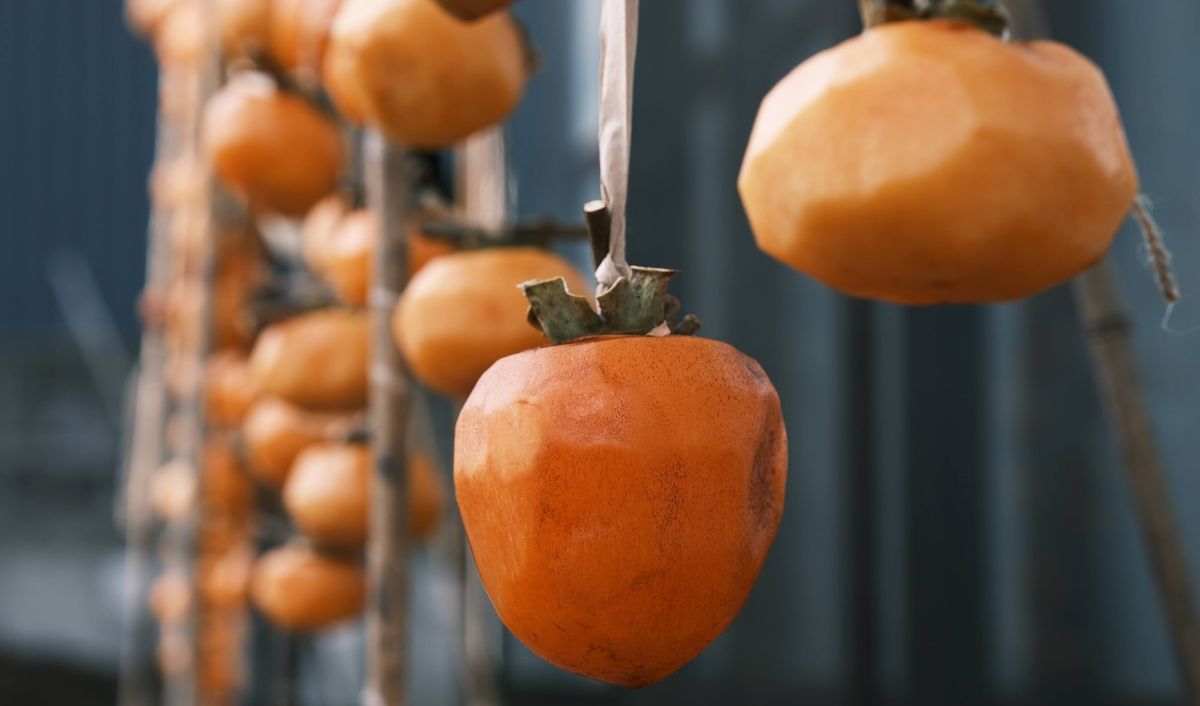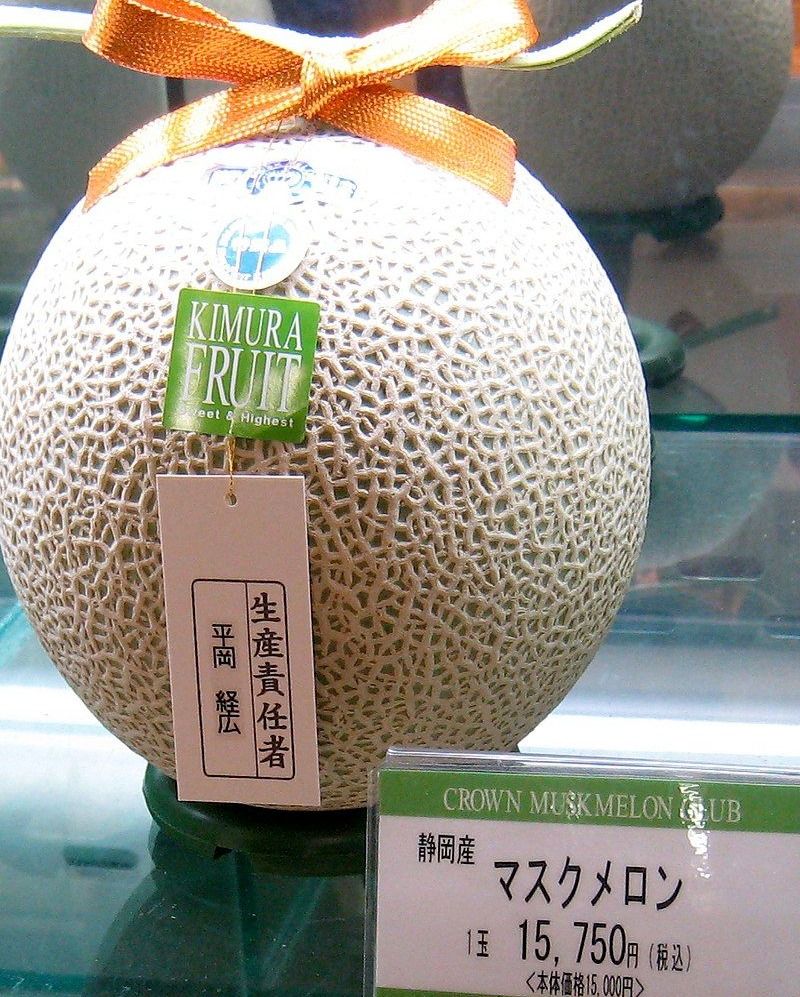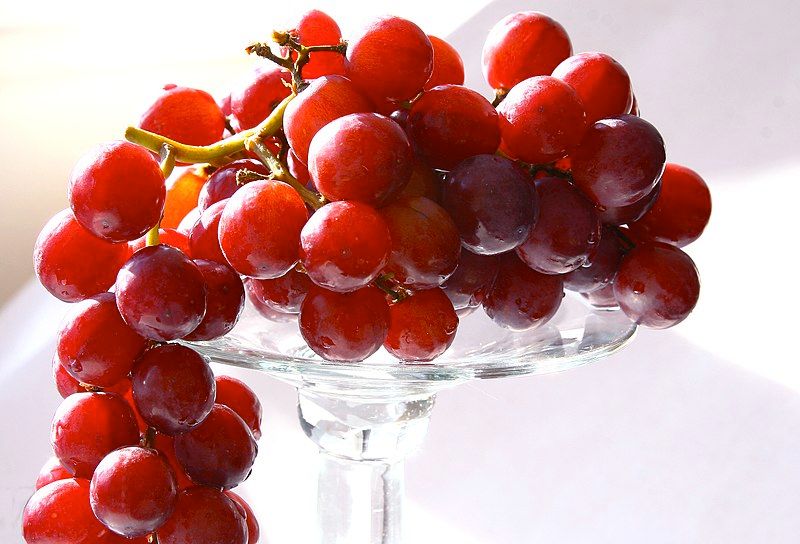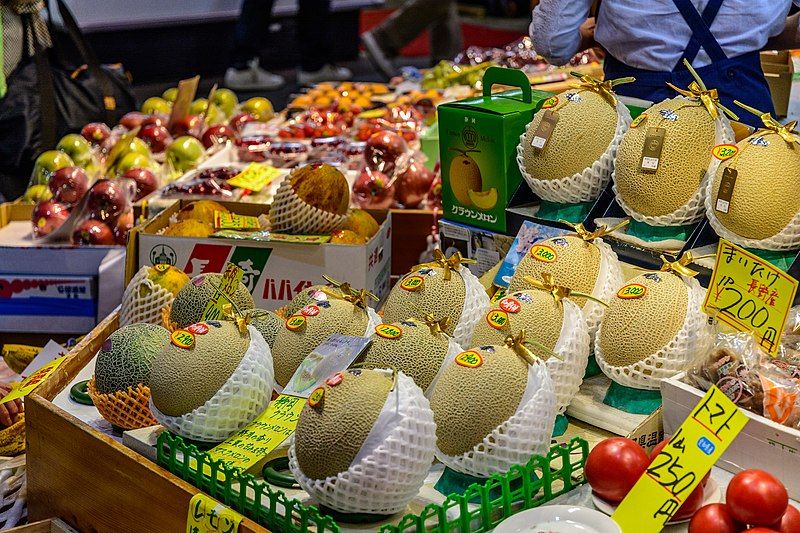Top 5 Most Expensive Japanese Fruits
Discover The Luxury Japanese Fruits

Japanese fruits are renowned not just for their delectable taste, but also for their often astonishing price tags.
Step into a Japanese supermarket, and you'll be greeted by an unusual sight in the fruit section. Instead of simple heaps of apples and oranges, you'll find meticulously packaged fruits encased in intricate plastic wrappings or housed in ornate wooden boxes.
These aren't your everyday produce – they carry with them hefty price tags, with certain fruits like melons sometimes fetching prices upward of 29,000 Yen ($200).
In this article, before dissecting the reasons behind the premium pricing and we’ll introduce you to the top five most exclusive fruits in the Land of the Rising Sun.
What Is Most Expensive Japanese Fruits?
1. Yubari King Melon
Price: $200 - $45,000

Yubari King Melons, some of the priciest fruits in Japan, that commonly priced at $200 per fruit, astonishingly fetch up to $45,000 a pair in auction– a price comparable to a car or even an annual salary for some.
What makes these melons command such exorbitant prices? Originating exclusively from Hokkaido Island, Yubari King Melons are revered for their impeccable balance of sweetness and juiciness, making them highly coveted by affluent connoisseurs.
Before reaching the market, these melons undergo rigorous scrutiny, evaluated based on dimensions, symmetry, hue, and scent.
The stringent cultivation conditions and labor-intensive harvest procedures limit the number of Yubari Kings available each season, further fueling their hefty price.
In Japan, they've evolved into more than just fruit; they're symbols of affluence. These melons frequently grace auction houses, where affluent individuals vie to claim these luxurious items.
For those reluctant to splurge on the premium version, there are more affordable alternatives labeled "Yubari Fruits", though they don’t quite match the iconic taste of the genuine Yubari King melons.
2. Ruby Roman Grapes
Price: $300 - $12,000 a bunch

The Ishikawa prefecture in Japan is renowned for producing the luxurious Ruby Roman Grape, often considered the priciest grape variety globally. Interestingly, Japan has risen as a dominant force in grape production, increasingly exporting its harvest across Asia.
In high-stakes auctions, these grapes can fetch up to $12,000, while retail prices for a bunch usually range between $100 and $300.
The cultivation of the Ruby Roman Grape is a blend of dedication and advanced agricultural technology. These grapes flourish within specialized greenhouses where precise temperatures and light levels are maintained.
The latter is crucial; as inadequate light can prevent the grapes from achieving their signature vibrant red hue. Regular fertilization and expert vineyard maintenance further ensure their premium quality.
The taste experience they offer is equally impressive, with many describing them as supremely juicy and flavorful.
Yet, to bear the distinguished "Ruby Roman" label, each grape in a bunch has to meet exacting standards: weighing at least 20 grams, exceeding 30 millimetres in diameter, and containing over 18% sugar.
Given these stringent requirements, each grape is meticulously examined before it reaches the market or consumer's plate.
3. Densuke Black Watermelon
Price: $2,000 - $6,000
Among the 1,200 watermelon varieties worldwide, Hokkaido's Densuke black watermelon reigns supreme in price and demand. With an annual yield rarely surpassing 100 units, its rarity is evident.
In Japan, Densuke Watermelons often fetch astonishing prices at auctions, with bids ranging from $2,000 to $5,000 for a single melon and reached a peak when one fetched a staggering 750,000 Japanese yen (around $6,000) at auction.
This melon's value isn't just its scarcity. Cultivated exclusively in Hokkaido, it's been carefully genetically modified over time, resulting in almost black-green hue. This shade, coupled with a notable shine, makes it a visual treat.
Yet, its appearance is just the beginning. Connoisseurs cherish the Densuke for its exceptional sweetness, minimal seeds, and unparalleled crunch.
These luxury melons, often compared to fine art, are packaged in stylish cubic boxes, complete with authenticity certificates. Frequently given as gifts, the Densuke symbolizes respect, gratitude, and the importance of maintaining cherished relationships.
4. Bijin Hime Strawberry
Price: $350 - $4,000
The strawberry sector is rife with tales of a berry that fetches from $350 to well over $4,000. Mikio Okuda, with 45 years of cultivation experience in Japan, has captured global attention with his Bijin-Hime, or “Beautiful Princess” Strawberry.
These berries are remarkable for their pristine shape and radiant sheen. They offer a juicy yet firm texture, maintaining a vibrant red core.
Their aroma is evocative of roses, and their sweet taste, devoid of typical acidity, is in a league of its own. These exceptional strawberries originate from Okuda Farms, situated in Hashima, Gifu Prefecture, near the Mount Ontake Volcano. There's speculation about the influence of volcanic soil on their flavor.
While Okuda-san keeps most of his techniques under wraps, he's divulged a few. His strawberries thrive in plastic greenhouses during winter, allowing him to meticulously manage temperature conditions. Rice straw mulching further aids this control.
At Okuda Farms, honeybees, housed inside the greenhouses, are primary pollinators. However, Okuda-san occasionally hand-pollinates select flowers, especially those with 8-9 petals, anticipating larger berries.
5. Miyazaki Mangoes
Price: $4,000
The Miyazaki mango, often called "egg of the sun" or Taiyo-no-Tomago in Japanese, stands out for its substantial size (weighing at least 350g) and its deep red to purple hue, earning it another nickname: "dragon’s eggs".
It boasts a deep, rich sweetness with minimal acidity. Their succulent and buttery flesh melts in the mouth, emitting a fragrant aroma reminiscent of floral notes.
Grown with exceptional care in specialized greenhouses, these mangoes are suspended towards the ceiling to maximize sunlight exposure and are encased in a mesh to prevent any damage. Some farmers even attach reflective pieces beneath each mango to promote uniform coloring.
However, only about 10% of these mangoes, those meeting stringent standards, attain the prestigious Taiyo no Tamago label. Such mangoes must:
· Showcase a consistent deep red color.
· Be free from defects or blemishes.
· Weigh at least 350 grams.
· Have a sugar content of 15% or above.
· Surpass a specific size standard.
Once certified as Taiyo no Tamago, they are auctioned at the Miyazaki Central Wholesale Market, with some fetching prices up to $4,000, and subsequently sold in upscale stores.

Why Are Japanese Fruits So Expensive?
In Japan, fruits transcend their role as mere sustenance. They are, in many ways, a form of art and luxury, revered not just for their flavor but for their aesthetic and symbolic value. Often presented as gifts on special occasions or as tokens of gratitude, these fruits hold a significant place in Japanese culture.
1. Meticulous Cultivation Techniques and Limited Terrain
Nearly 80 percent of Japan's terrain is dominated by mountainous regions, leaving limited space dedicating only 12% of its land to agriculture and most of it utilized for rice production.
However, Japan’s reputation for producing premium fruits is unparalleled. This scarcity of farmland, coupled with an artisanal approach to farming, inherently pushes demand and prices higher.
Many farms are family-owned legacies, focusing on refining a single fruit variety over generations. The Yubari King Melon, known for its meticulous cultivation, in such a way that only one fruit is allowed to grow on each plant. The Bijin Hime Strawberries' sweetness, the weighty Ruby Roman Grapes, and the distinct Densuke Watermelon from Hokkaido each tell a similar tale of precision and generational expertise.
In buying these fruits, one isn't just enjoying a treat but savoring a piece of Japan's agricultural heritage, shaped by its unique blend of limited terrain and unwavering commitment to perfection.
2. Strict Quality Control Set by Japanese Agriculture Cooperative (JA):
Have you ever been struck by the flawless aesthetics of Japanese fruits? This perfection stems from the exacting standards of the Japanese Agriculture Cooperative (JA), the pivotal authority in Japan's agricultural sphere. Most farm outputs are funnelled through JA, which then classifies them by their size, color and taste.
Fruits that don't meet these impeccable standards, it will be discarded or channelled into other product lines like canned goods, preserves, or juices. As a result, when buying fruits in Japan, you're genuinely acquiring top-tier quality.
For example, the Ruby Roman Grapes need to meet specific criteria – like each grape in the bunch being over 20 grams and containing high sugar content – to qualify for the premium status.
3.Significant Amount of Hand Labor:
A significant amount of hand labor goes into the cultivation of these fruits. From hand-pollination to careful pruning and individual packaging, the attention to detail is unparalleled. Taiyo no Tamago Mangoes, for instance, are often suspended on strings so they can grow without any blemishes.
The renowned crown musk melons from Shizuoka are cultivated with remarkable precision: each vine bears just one melon hence, all of the plant's nutrients enrich that one fruit, ensuring unparalleled quality and flavor.
To protect them from the sun's harsh rays, these fruits are adorned with protective hats, and farmers, wearing cotton gloves, gently massage them, enhancing their sweetness.
4. Symbolic and Aesthetic Value:
Fruit gifting holds significant cultural value in Japan, deeply intertwined with the changing seasons. As each season ushers in its unique fruits, they become symbolic representations of that particular time of the year.
This seasonal ebb and flow allow individuals to savor the distinct hues, fragrances, and flavors that each period brings forth. Moreover, gifting fruits, being consumables, ensures recipients aren't burdened with unnecessary possessions.
The gift's nature demands that the fruit appears flawless. As a result, ensuring fruits are free from blemishes or any imperfections requires immense labor and a relentless commitment, emphasizing the reverence given to these luxuries produce items.
5. Subject to Seasonal Availability:
Given the temperate climate of the Japanese archipelago, fruits can only be cultivated during specific periods each year.
The seasonal nature of fruits, such as melons in summer and apples and strawberries in winter, greatly influences their pricing.
This limited growing window restricts production, making it challenging for farmers to match the consistent demand. Consequently, with a limited supply and steady demand, prices tend to rise, explaining the premium costs of fruits in the country.
In Conclusion
By understanding these factors, one can truly appreciate the craftsmanship, dedication, and tradition that contribute to the premium status of these exquisite Japanese fruits.


